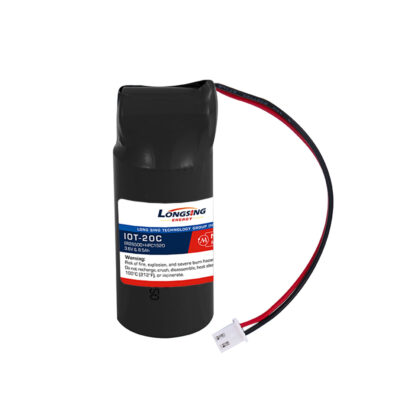IoT Battery Pack
Showing 9–9 of 9 results
Long Sing’s IoT battery packs offer high-performance and reliable power for various applications. With advanced technology and superior quality, our IoT batteries deliver long-lasting energy, making them ideal for IoT devices like water meter data loggers, asset trackers, and industrial sensors. Trust Long Sing is your IoT lithium battery company for dependable and efficient power solutions.
Most smart meters are powered by LiMnO2 (lithium manganese dioxide) or LiSOCl2 batteries and need to support 10 years or more of operation. Because the voltage of a LiSOCl2 battery (about 3.6 V) is higher than a LiMnO2 battery (about 3 V), a LiSOCl2 battery can better support a 3V electromagnetic valve, which why it is a more popular choice for smart meter applications. The weakness of a LiSOCl2 battery is that the maximum continuous current and pulse current capability is limited.
A standard bobbin-type LiSOCl2 battery cannot deliver high pulses due to its low rate design. However, this can be easily overcome by incorporating a hybrid pulse capacitor (HPC). The standard bobbin-type LiSOCl2 cell delivers low daily background current while the HPC handles periodic high pulses.
Supercapacitors can also deliver high pulses. However, supercapacitors are generally unsuited for industrial applications due to inherent drawbacks such as short-duration power, linear discharge qualities that prevent use of all the available energy, low capacity, low energy density, and high annual self-discharge rates (up to 60% per year). Supercapacitors linked in series also require the use of cell-balancing circuits, which add to their cost and bulkiness and consumes energy, which further raises their selfdischarge rate.
The simple solution is the direct lithium battery connection solution, like Figure 1-1. The communication model such as NB-IoT is connected with the LiSOCl2 and HPC package directly.
The voltage of the LiSOCl2 and HPC package is about 3.6 V at room temperature. When the smart meter does the transmission, the HPC supports the high pulse current for the NB-IoT. During sleep mode, the LiSOCl2 battery charges the HPC and supports the whole system consumption.

The working principle of Long Sing IoT battery pack series ER+HPC:
ER and HPC are connected in parallel, and the voltages of the two are always the same. When power is supplied to the outside, HPC bears most of the current output, the voltage of the HPC will drop quickly. When the work turns to static, the open circuit voltage of ER rebounds, that will instantly form a voltage difference with the capacitor, ER charges HPC through voltage difference. This is repeated by ER to increase the voltage of the entire battery pack until the voltage reaches 3.65V. Before the next pulse arrives, ER charges the HPC to the appropriate voltage, the discharge capability of the HPC corresponds to the voltage. Repeating this cycle until the ER battery capacity is exhausted can ensure that the service life and discharge capability of the battery pack are within the estimated range.
The main benefits of Long Sing IoT batteries would be as follows:
- Low and medium rate lithium batteries can be used, rather than high rate batteries.
Thus, higher safety levels and higher energy densities can be obtained.
- A higher percentage of the nominal capacity of the battery becomes available (rather than only 50-80 percent, or even less).
- The maximal voltage drop during the pulse is stable and can easily be predicted in worse case conditions.
- ER+HPC series extend the operating life of the battery by up to 15% under certain conditions, especially in extremely hot or cold temperatures.
IoT battey pack applications:
Smart meters(water meters, gas meters)
Smart sensors
Smart IoT devices
Asset/Container trackers
Data loggers


